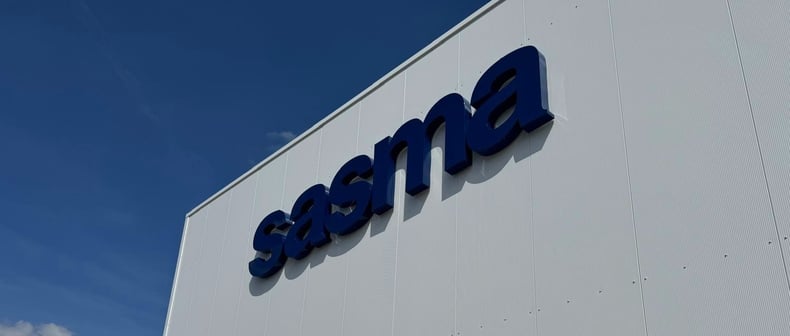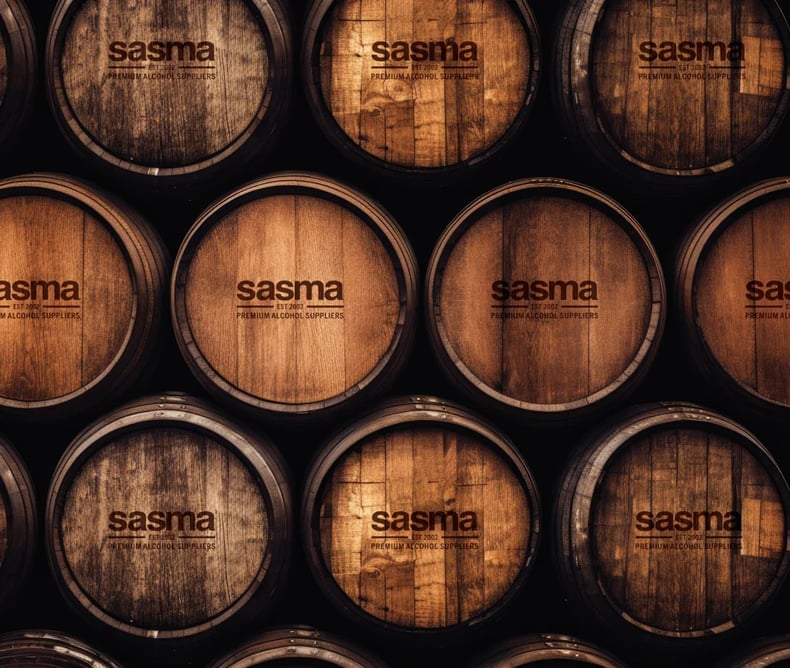
Bourbon Whiskey Imports into the EU: Tariffs & Trade Flows
Tariff Dispute and Suspension (2018–2025)
In mid-2018, the European Union (EU) imposed a 25% retaliatory tariff on U.S.-origin whiskies as a countermeasure to U.S. steel and aluminum tariffs. This tariff remained in place through 2021, severely constraining exports to Europe.
Under a 2021 U.S.-EU agreement, the EU suspended its tariff on American whiskey, effective January 1, 2022, for two years. It marked a breakthrough in the trade dispute. It temporarily restored duty-free access for bourbon and other U.S. whiskeys in Europe.
In December 2023, facing a looming deadline, Brussels extended the tariff suspension an additional 15 months through March 31, 2025, to allow more time for a long-term resolution.
Trade Talks Reach a Turning Point
As the March 2025 expiry approached, tensions resurfaced. The European Commission announced plans to reinstate tariffs on U.S. goods (including bourbon whiskey) starting April 2025, even threatening to double the rate to 50% in the absence of a new metals agreement. It prompted alarm on both sides of the Atlantic, given whiskey’s importance in transatlantic trade.
However, intense negotiations and industry lobbying led to a last-minute reprieve: in early April 2025, EU member states excluded American whiskey from the final retaliatory tariff list, opting not to reimpose any tariff on bourbon for now. This decision effectively extended the duty-free treatment of U.S. whiskey, averting a potential trade crisis. European officials acknowledged that keeping whiskey out of the fight was a “positive first step” toward a broader settlement, as both sides seek to return to a permanent “zero-for-zero” tariff regime on spirits. The compromise prevented an immediate shock, but a lasting resolution is still being negotiated in order to avoid tariffs snapping back in the future.
Rebound in Bourbon Whiskey Trade After Tariff Suspension
The suspension of EU retaliatory tariffs in 2022 had a dramatic impact on trade flows. During the tariff years (2018–2021), American whiskey exports to the EU had slumped by roughly 20% in value, from about $552 million in 2018 to $439–440 million in 2021.
What Does This Mean For Consumers?
- This decline reflected the reduced competitiveness of U.S. bourbon in Europe. Once tariffs were lifted, however, the trend sharply reversed. U.S. distillers rapidly regained market presence: American whiskey exports to the EU surged nearly 60% from 2021 to 2024, climbing from roughly $439 million in 2021 up to $699 million by 2024.
- In 2023 and 2024, export values to Europe reached or surpassed all-time highs. The Distilled Spirits Council reports that U.S. whiskey exports reached $705–$707 million in 2023, a new record, before dipping slightly to $699 million in 2024.
- This post-suspension rebound clearly underscores the critical importance of the tariff relief. By 2024, the EU accounted for over half of the global value of American whiskey exports, reestablishing Europe as the top export destination for Kentucky bourbon and other U.S. whiskeys.
- The export revival was broad-based across Europe. Industry analysts attributed the growth to pent-up demand and distributors replenishing stocks once tariffs were waived. The lifting of duties enabled American brands to compete on price again, resulting in a resurgence of sales in major EU markets. However, the brisk recovery in 2022–2024 also reflected some front-loading: some European importers accelerated purchases of U.S. whiskey in anticipation of a possible tariff return in 2025.
This stockpiling effect may explain why exports dipped slightly in 2024 (-5.4%), as companies cautiously built up inventory ahead of the original tariff deadline. Overall, the suspension allowed U.S. bourbon producers to recapture market share lost during the trade war, with export values quickly approaching pre-tariff trend levels. The data make the case that stable, tariff-free trade directly correlates with robust growth in transatlantic whiskey commerce.
Key European Markets: Netherlands, Germany, and France
Within the EU, several key countries stand out in the bourbon (and general whisky) import landscape – notably the Netherlands, Germany, and France. These three markets have been instrumental both as large consumers and as gateways for bourbon distribution across Europe.
Netherlands: The Netherlands has emerged as a strategic hub for whiskey imports, including bulk bourbon destined for EU bottling and re-export. In 2023, the Netherlands imported over $622 million worth of whisky (of all origins), ranking among the top five importers globally.
Much of this volume arrives through the port of Rotterdam, Europe’s busiest port, and is then bottled, labeled, or transshipped to other EU countries. The Dutch role is thus heavily tied to logistics and re-export. Rotterdam and Amsterdam serve as major entry points through which American bourbon flows into the single market.
The tariff suspension from 2022 boosted these flows. Dutch importers were quick to ramp up bourbon purchases once extra duties were lifted. As a result, the Netherlands has facilitated a significant share of the post-2022 surge in EU-bound bourbon, acting as a central distribution node for the spirit.
Germany: Germany is both a large whiskey consumer and an important import corridor in its own right. The 2023 whisky imports totaled approximately $527 million in value, ranking it among the top ten worldwide. German consumers have shown a growing appetite for American bourbon in recent years, alongside the country’s long-standing taste for Scotch and Irish whiskies.
The removal of tariffs has been especially impactful here: U.S.whiskey became more affordable after 2022, and importers expanded their orders accordingly. Germany also functions as an “entry point” for Central/Eastern Europe.
Some bourbon shipments are redistributed regionally, bolstering its import tally. The combination of strong domestic demand and its role in EU transit trade has made it a pivotal market for bourbon. Imports of American whiskey recovered strongly after 2021, helping drive overall EU import growth.
France: France might be renowned for cognac and wine, but it is also one of the world’s largest whisky importers. Over the years, France imported approximately $878 million of whisky of all types, second only to the United States itself in global import value.
This reflects France’s status as a top whisky-consuming nation in per capita terms. The French spirits market has a deep affinity for Scotch whisky; however, American bourbon has carved out a growing niche, particularly in cocktails and premium bars. Even during the tariff period, the French consumer's thirst for whiskey remained high.
Since the tariff suspension, American whiskey exports to France have accelerated. France’s import volumes of U.S. whiskey rebounded as tariffs fell away. Distributors restocked, and American bourbon became price-competitive alongside Scotch. Additionally, some whisky imported into France is finished or blended locally and then re-exported, a practice that contributes to France’s large import/export figures.
Overall, France stands out as a key end-market for bourbon within Europe, characterized by large consumption and value-added reprocessing of imported whiskies.
Effects of the 2022 Tariff Suspension and Outlook
The agreement to suspend the retaliatory whiskey tariff has clearly revitalized the transatlantic bourbon trade. U.S. distillers, large and small, have been able to rebuild their European business after the deep slump.
Industry leaders stress that the suspension “allowed U.S. distillers to begin rebuilding their presence in our largest export market”, with American whiskey exports to Europe climbing back to pre-trade-war levels. The export gains underscore the pivotal role a tariff-free environment plays for this sector.
The suspension’s positive impact is evident in investment and marketing. Many brands ramped up their European distribution again, and craft distillers who had paused EU expansion began reconsidering those markets. European importers likewise welcomed the stability. They no longer had to pay an extra €5–€10 per bottle in tariffs, facilitating better pricing for consumers and higher volumes.
International Trading News: Moving Beyond 2025
As of late 2025, the trade flows remain strong. Bourbon imports into the EU remain buoyant under the continued suspension, with key importers such as the Netherlands, Germany, and France maintaining high-volume orders. The tariff détente of 2022–2025 has clearly benefited both sides of the Atlantic in terms of jobs, sales, and consumer choice in the spirits sector. However, all eyes are on the upcoming negotiations to prevent a relapse.
The 2022 suspension agreement is set to expire, and without a new deal, tariffs could snap back (or even escalate) in the year ahead. However, the recent high-level talks have been promising. The U.S. and EU discussed capping or eliminating tariffs on various goods in mid-2025, with both sides optimistic about carving out an exemption for wine and spirits in a final deal. In the interim, the EU’s decision earlier this year to hold off on whiskey tariffs has created a de facto extension of the favorable terms. As negotiations continue into 2025, the hope is that the bourbon traded in bulk from Kentucky to Europe can continue to flow smoothly, fueling business growth and bourbon enthusiasm on both sides of the ocean without the return of damaging duties.
Sources
The Distilled Spirits Council of the United States
https://www.distilledspirits.org/wp-content/uploads/2025/04/American-Export-Report-Final.pdf
Related articles
-

Sasma Halsteren Facility On Track To Open April 2026
Sasma’s new Halsteren warehouse is progressing as planned, marking a significant investment in our long-term...Read more -

Exploring Bulk Whisky with Sasma: Quality, Customization, & Expertise
Understanding the factors shaping bulk alcohol pricing is crucial. Learn how raw materials, production processes, and...Read more -
.jpg?width=790&height=980&name=sasma-apr25-websize-366%20(1).jpg)
What Is A CAS Number and Why Is It Important?
Quality at Sasma more than a standard we adhere to. we're suppliers of bulk spirits & alcohol, from sourcing and...Read more -

The Sasma Standard: A Commitment To Quality & Consistency
Quality at Sasma more than a standard we adhere to. we're suppliers of bulk spirits & alcohol, from sourcing and...Read more -
.png?width=790&height=980&name=2%20(3).png)
Sasma Quarterly Newsletter – September 2025
As we close out Q3, we share the key developments shaping our industry: global trade agreements & tariff shifts,...Read more -

How EU-Mercosur Deals Could Reshape Ethanol & Alcohol Trade
After more than 25 years of negotiations, the EU and Mercosur reached a political agreement on trade in December 2024,...Read more
